2012 Subaru Impreza


Suzuki Kizashi Apex


2012 Honda Civic









Bumblebee (known as Bumble in Japan, Moscardo in Portugal Űrdongó in Hungarian, Maggiolino in Italy) is the "little brother" of the heroic or protagonistic Autobotbfaction and a masscot, constantly striving to prove himself in the eyes of the taller, stronger robots that he respects - especially his leader, Optimus Prime. So strong is this admiration toward others, he takes risks that put him in danger. Although a bit of a wise-cracker, he is a capable and reliable messenger and spy, his small size allowing him to go places that his larger commanders cannot. He is highly fuel efficient, has great visual acuity, is particularly adaptable to undersea environments and transforms into a Volkswagen Beetle. He was later reconstructed in a stronger, more mature form as Goldbug.
Bumblebee is established as the smallest of the first year Autobots, but his actual size varies greatly in the various media, ranging from the same size as other Autobot cars to barely taller than a human. His only official height was in an early issue of the Marvel comics where it is stated he is 15 feet tall.
Bumblebee's primary function in the original Transformers animated series and comics was to serve as the "young" character with whom the youthful viewing audience could identify, and he would befriend the Autobots' primary human ally - the young son of the Witwicky family(Buster in the Marvel comic - see issue #1 - and Spike in the cartoon) - to this end, a concept that persists into the 2007 live-action filim. Although a well-known character because of this, Bumblebee is quite unusual in that, unlike many other Transformers, his name has notbeen re-used and applied to unrelated characters throughout the ensuing twenty years of Transformers media, due to the loss of the trademark until recently. His role as the "young yellow character", however, has inspired other Transformers characters with the same role such as Cheetor and Hot Shot.
more picture for Bumblebee car's...




With exterior styling that is a departure from Nissan Skyline GT-R models of the past 20 years, the 2009 Nissan GT-R places performance function on the level with styling. Classic Skyline GT-R touches are found in the taillights and rear end, as well as in the flared rear fenders embracing 20 x 10.5 in. rear wheels.
No stock Skyline GT-R model in Nissan's history can touch the performance ability of the brand-new 2009 model. The Skyline, like other critical darling sports cars such as the BMW 3-Series, has always been about outputting greater performance than spec sheets and dyno numbers would indicate. The 2009 GT-R offers some of the most sophisticated electronic engine and drivetrain management found on any sports car in the world.
Offering a stellar bang-for-the-buck ratio with a base price a hair under $70,000, the 2009 Nissan GT-R is already commanding siginificant price gouging over MSRP. All the official details appear below, direct from Nissan...
Official 2009 Skyline GT-R press release from Nissan...
Nissan Motor Co., Ltd., today announced the launch of the Nissan GT-R, a new multi-dimensional performance machine that lives up to the concept of "an ultimate supercar for anyone, anywhere, at anytime". The Nissan GT-R features a newly developed Premium Midship package, including the world's first independent transaxle 4WD developed independently by Nissan. The Nissan GT-R will be available in Japan mainly through Nissan High Performance Centers nationwide from December 6th.
The Nissan GT-R was developed with a new understanding and appreciation of the Earth's natural forces - gravity, inertial force and aerodynamics - and translates those forces into a completely new design, maximizing tire grip and airflow.
Basic vehicle dynamics and integration with the driver have also been examined, resulting in new componentry and creating a Human-Machine Interface (HMI) never seen before in the marketplace. All of these theories have been integrated to balance "speed and efficiency," "high-output with environmental consideration" and "high performance and safety."
Taking these factors into account, Nissan created the all-new Nissan GT-R, which offers advanced high performance for secure and enjoyable driving by minimizing the effects of climatic, road condition or driving technique limitations. The Nissan GT-R offers ultimate performance for virtually every driving situation - whether it be the Nurburgring circuit, to snow, rain or urban areas - all manageable by the GT-R driver through advanced technology and driving dynamics.
The Nissan GT-R's unique characteristics are instilled not just in the vehicle's design, but also through a specialized production process. Carbon fiber, aluminum and steel components are assembled with a special high-precision process, which includes a series of vibration tests. Engines and transmissions are assembled by a single craftsman in a "clean room" environment and upon completion, every GT-R undergoes a battery of comprehensive tests to ensure the proper operation of all vehicle components.
To properly support the all-new GT-R, Nissan has established special Nissan High Performance Centers, where all certified advisors and technicians have received extensive training. Total support for the GT-R owner is offered for the first three years of ownership, including measurement and adjustment of the engine, transmission and wheel alignment after the first 1000 km, and again every 12 months, free of charge.
Packaging and Driveline Suited for a Supercar
The all-new Nissan GT-R uses a Premium Midship package, an all-new, more advanced version Front Midship (FM) package utilized on other Nissan vehicles. This new package enables the use of the world's first application of an independent transaxle 4WD system. The transaxle's layout places the dual-clutch transmission, transfer case and final drive at the rear of the vehicle (instead of the usual front location), which enables vehicle weight to be evenly distributed throughout the car. This gives the Nissan GT-R a superb front-to-rear weight balance, while enhancing leg and foot space and allowing for an optimal pedal layout.
Under the hood, the Nissan GT-R features an all-new 3.8-litre twin turbo V6 "VR38" engine, featuring plasma-sprayed bores and a special twin-turbo exhaust manifold system. A secondary air management system enables the newly designed powerplant to provide approximately 40kg/m of torque during ordinary low-rev driving, which gives an optimum air-fuel ratio for around-town efficiency and helps the Nissan GT-R meet ultra-low emission vehicle (U-LEV) standards in Japan.
The Nissan GT-R's new engine produces 480PS (353kW) at 6400rpm and maximum torque of 60kgm (588Nm) from 3200 to 5200rpm. Putting the power to the ground is an all-new GR6-type dual clutch transmission, with paddle shifting and a Borg Warner six-plate dual clutch for direct control.
Suspension duties are handled through a special Bilstein DampTronic*1 system, which utilizes all pertinent vehicle information to provide appropriate damping forces for all situations and helps maintain a high level of control for straight-line driving, cornering, and braking.
Braking is essential for a daily-driven supercar and the GT-R features large Brembo full-floating drilled rotors, low steel high stiffness brake pads and Brembo mono block six-piston front and four-piston rear calipers, which in combination minimize fade and provide stable braking. Run-flat tires, exclusively designed for use on the Nissan GT-R, balance high grip and all-weather capabilities and a comfortable ride in all driving situations. The tires are designed to maintain structure for 80km of travel at 80 km/h, while still providing an acceptable level of performance.
High-Performance Safety and Environmental Technologies
The Nissan GT-R offers a long list of safety and environmental features, including, for enhanced visibility inside and out of the vehicle, high-mounted LED stoplamps, bright LED rear combination taillights, "super wide beam" headlights, heated door mirrors and flat-blade wipers.
Standard safety equipment includes a pop-up engine hood system for enhanced pedestrian safety, driver and front passenger SRS Air Bag System, ELR front seat belts with tension reducer, front seat belts with load limiter, and three-point ELR rear seat belts. Driver and front passenger SRS Side Air Bag System and SRS Curtain Air Bag System are offered as options.
Environmental technologies include extensive work to create an U-LEV certification in Japan for the 3.8-liter twin turbo engine and reduced levels of volatile organic compound for materials used in the car.
Functional Design - High Performance Aerodynamics and Style
The Nissan GT-R's styling follows the function over form theory. Every styling aspect, from the overall design to the smallest details, is created to maximize the vehicle's driving experience - as well as suggesting GT-R's "supercar" level of performance. Utilizing advanced aerodynamics, the Nissan GT-R's aggressive styling evokes the lines of a well-trained athlete, combining strong character lines with smooth and solid areas.
The all-new GT-R's body is created with a combination of steel, carbon fiber and aluminum, providing a unique combination of stiffness and lightness. The Nissan GT-R features a low coefficient of drag of 0.27, with high front and rear downforce, which provides the GT-R with enhanced grip in all weather situations, while also enhancing fuel efficiency.
The front fenders express power and stability, while the "aero-blades" on the fenders' leading edges provide optimum airflow around the tires and along the body. The scoop in the fenders' trailing edges assists in providing front downforce and optimization of side airflow. The aggressive front end, with a large hood budge and single air intake, provides a sophisticated style as well as undisturbed airflow for power and cooling. New "super wide beam" headlights feature three additional sub-reflectors (compared to conventional lights) to give a wider spread to the illumination area.
The Nissan GT-R's large, four-passenger cabin features a sloping "aero blade canopy" roofline and curved C-pillar "sword edge," which expresses the distinctive GT-R identity, as well as facilitating air flow around the rear of the vehicle. The GT-R's hallmark four-ring taillights, efficient rear spoiler and large, integrated f120 exhaust tips, provides the signature rear view of the GT-R, as well as optimizing airflow along the top and under the vehicle.
The high level of advanced technology is evident even in the Nissan GT-R's paint - which utilizes a "double clear coat" and "anti-chipping" process. The Nissan GT-R features Ultimate Silver as a special new color, which is painstakingly hand-polished by craftsman.
An Interior Suitable for Daily Driving or Supercar Duties
Key to the Nissan GT-R's usability as a both daily driver and a high-performance supercar is its interior, which is designed to balance functionality, a sense of ease, and comfort.
Sculpted performance bucket seats give the driver and passenger a comfortable driving experience, and soft pads are utilized on the dash in front of the passenger and doors to give an extra level of comfort and safety.
The instrument panel surrounds the driver, with all meters and multi-function meter at a uniform height to minimize the driver's head movement when traveling at high speeds. A large center-mounted tachometer, with gear display on its upper right, as well as the easy-to-read graphics of the display, gives the driver instant detailed information, essential for the performance nature of the GT-R.
Functional style is also evident in the Nissan GT-R - each meter features a dial plate design that evokes the idea of engaged gears, as well as a three-dimensional metal-like ring, suggesting the multi-dimensional performance of the GT-R. A large, metallic-framed center console features the ergonomically designed shift lever and a red "engine start" button.
Adjustability is central to the daily-driver nature of the Nissan GT-R, with a special "set-up switch" located in the center of the instrument panel. This switch enables the driver to adjust transmission shifts, shock absorbers and the Vehicle Dynamic Control (VDC-R) in three settings - Normal, Comfort or R, the high-performance setting designed for the Nissan GT-R "supercar" application.
A high-speed, high-capacity CARWINGS (Japan market) navigation system, with a powerful 30GB hard disk drive, features an easy-to-use touch pad, as well as traditional navigation switches. The screen interface features not only the navigation system, but also an enriched entertainment system with a Music Box hard drive, DVD and CD player, and Bluetooth® *2 audio function.
For special use in the GT-R application, the multi-function meter also includes mechanical and driving information for safe high performance driving, including acceleration opening, brake pedal pressure, and steering angle. It also includes an "optimal gearshift map," to emphasize economical vehicle operation.
A specially designed BOSE sound system includes two forward-facing woofers in the rear center armrest area combined with traditional door speakers. All speakers are mounted in rigid aluminum die cast panels, which combined with the design of the system itself, provide sound quality suitable for a supercar.
If you like to see another picture skyline Nissan click this..


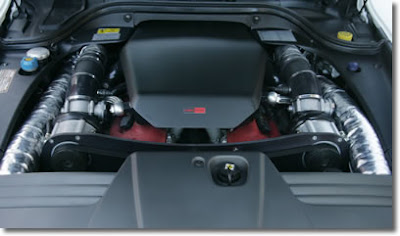

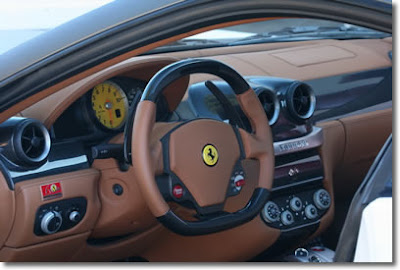


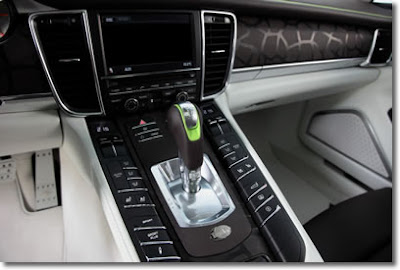

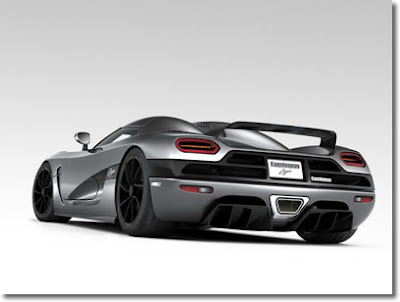
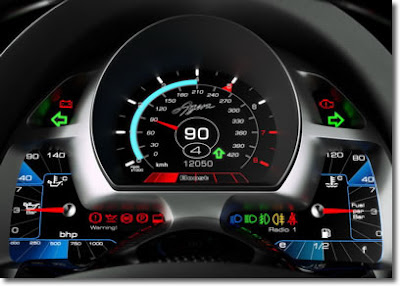
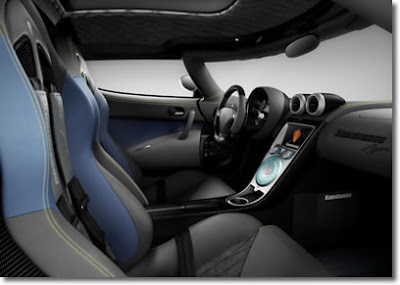

.jpg)
.jpg)


.jpg)

.jpg)







.jpg)




.jpg)



.jpg)

.jpg)
.jpg)
.jpg)
.jpg)
.jpg)
.jpg)

.jpg)
.jpg)